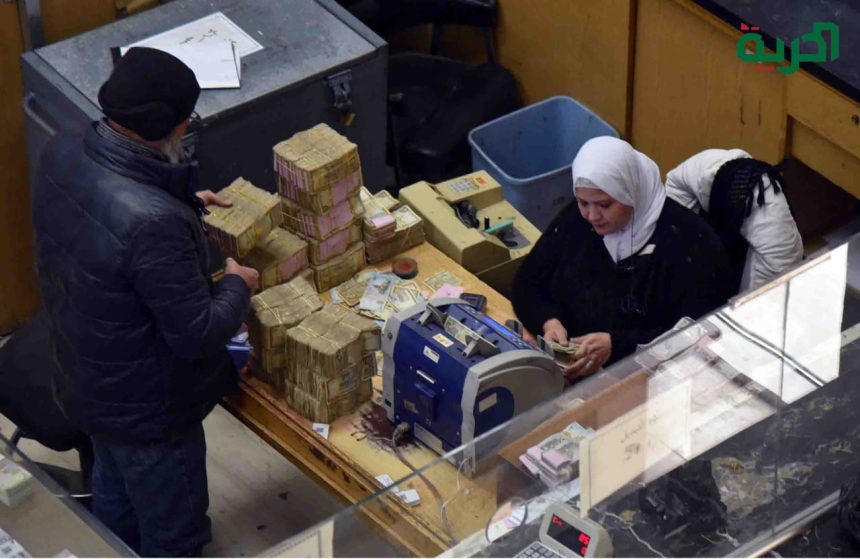Syria is grappling with a severe liquidity crisis, with cash shortages affecting markets, businesses, and government operations. The Central Bank of Syria (CBS) is holding onto reserves to meet state obligations, including salaries and essential expenditures, while the new administration faces the daunting task of restructuring financial institutions, combating corruption, and attracting investments.
Despite reports that Syria received a new shipment of printed banknotes from Russia, the CBS confirmed that only 300 billion Syrian pounds arrived, as part of an earlier contract signed with Russia. While this injection of cash was intended to ease liquidity constraints, it remains insufficient to address the wider economic crisis.
Exchange Rate Anomaly and Cash Hoarding
An unusual phenomenon has emerged in Syria’s currency market, where the Syrian pound’s value in the parallel market has dropped below the official rate. This is partly due to a shortage of available cash, exacerbated by an increase in remittances and returning refugees.
However, another key factor is cash hoarding and speculative trading. Large amounts of money are concentrated in the hands of currency traders, speculators, and business elites, many of whom expect the pound’s value to rise and are withholding liquidity from the market. Additionally, former regime figures still control significant sums of cash, further distorting money circulation.
Potential Solutions to the Liquidity Crisis
- Partial Dollarization: A Risky Alternative
One proposal to address the liquidity shortage is partial dollarization, where:
- Salaries of government employees would be paid in U.S. dollars
- Major transactions, such as real estate deals, would be conducted in dollars
- Basic commodities (bread, fuel) would still be sold in Syrian pounds
While this approach could increase liquidity in the short term, it poses risks, including a potential acceleration of the Syrian pound’s collapse if the economy becomes too dependent on foreign currency.
- Printing More Money—With Caution
Another possible solution is printing additional Syrian pounds, but this must be done carefully to avoid inflation and economic instability. Before issuing new money, the government must:
- Build public confidence in the printing process
- Ensure high-security printing technology to prevent counterfeiting
- Limit printing to necessary amounts, factoring in costs and repayment mechanisms
- Expanding Digital Payments
Syria’s banking system lacks modern digital payment infrastructure, forcing people to rely on cash transactions, which worsens liquidity shortages. To modernize financial operations, experts suggest:
- Encouraging digital transactions
- Activating electronic bank accounts
- Developing e-payment solutions
By reducing reliance on physical cash, electronic payments would help circulate liquidity more efficiently, though structural banking reforms are needed before large-scale adoption.
- Cracking Down on Speculation
Both licensed and unlicensed exchange firms are hoarding large sums of money outside the formal banking system. To counteract speculative trading, the government must impose:
- Strict regulations on currency traders
- Heavy fines on financial speculation and cash hoarding
- Stimulating Economic Growth
To restore economic stability and increase liquidity, Syria must attract foreign and domestic investment. This requires launching public-private partnerships through:
- Government-led projects
- Private sector initiatives
- Reliable business figures with official bank accounts
By redirecting Syrian pounds into the banking system, these investments could help revitalize economic activity.
Spending Priorities in the Crisis
Given the dire economic conditions, the government’s top spending priorities remain:
- Ensuring public sector salaries and operational costs
- Restoring essential services and infrastructure
- Repairing Syria’s deteriorating energy sector
Additionally, 18 million Syrians remain in need of humanitarian aid, highlighting the need for international support to:
- Lift sanctions on Syria
- Fund reconstruction efforts
- Revive economic development
In sum, Syria’s liquidity crisis is a symptom of a broader economic collapse, requiring urgent financial reforms, investment incentives, and international support. Years of war, infrastructure destruction, and sanctions have left the country on the brink of financial instability. Without decisive action, the crisis will continue to stifle Syria’s path to recovery.
This article was translated and edited by The Syrian Observer. The Syrian Observer has not verified the content of this story. Responsibility for the information and views set out in this article lies entirely with the author.


